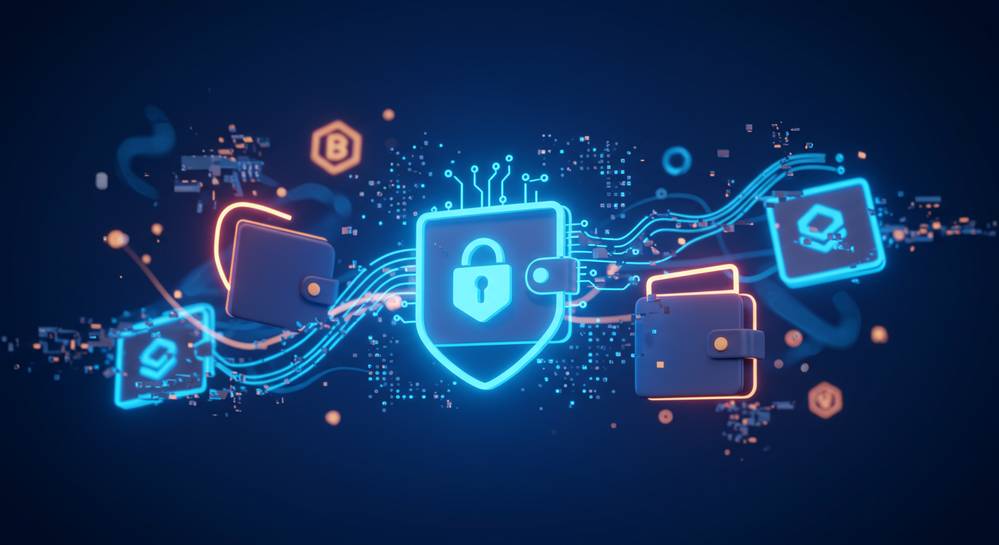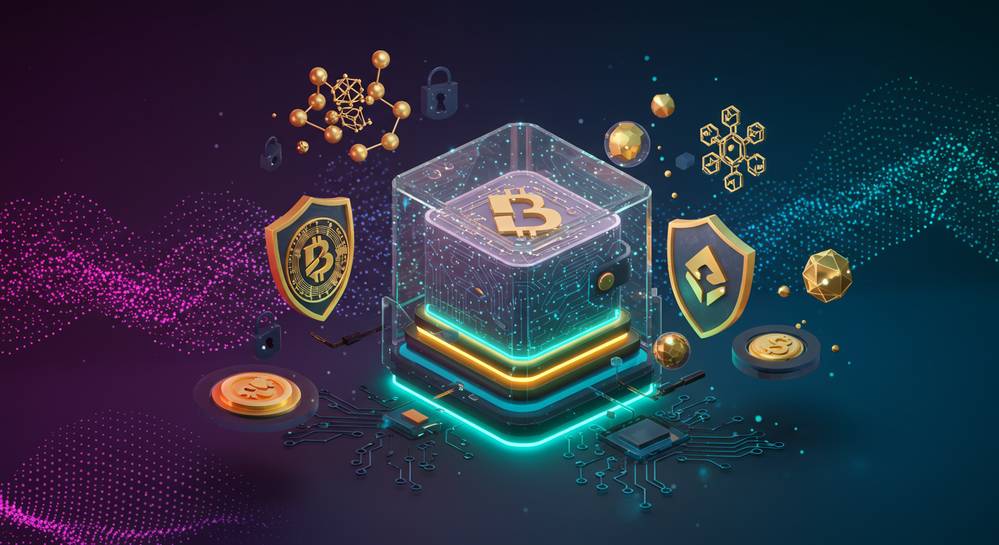Diving into the world of cryptocurrency, choosing the right wallet is a big deal. Custodial vs non-custodial wallets (and how to create each) is not just about preference, it’s about control. With a custodial wallet, a third party keeps your keys safe. You trust them, just like you trust a bank with your cash. Non-custodial wallets? Now that’s you calling the shots, your keys, your rules. But hang on, setting them up isn’t the same ball game. Stay tuned as I break it down for you—simple, straightforward, and no tech-jargon. Whether you’re new to digital currency or looking to switch things up, you’ll be ready to make an informed decision and take charge of your crypto future. Buckle up, and let’s get started!
Understanding the Landscape of Custodial and Non-Custodial Wallets
Defining Custodial Wallets: An Introduction
You’ve heard of banks, right? Think of custodial wallets as banks for your crypto. They hold your digital coins for you. With them, you don’t need to worry about losing your private keys because the service provider manages them. But remember, they also control your funds. This means they can freeze your assets if they must.
Non-Custodial Wallet Features and How They Empower Users
Non-custodial wallets are like having a safe at home. Only you have the key, which means only you control your crypto funds. They put power in your hands. You make all the calls. You must keep your private keys safe though. If you lose them, it’s like losing the key to that safe—there’s no way to get your crypto back.
In comparing the two, security often comes up. Non-custodial wallets may offer more security because only you access your keys. This reduces the chance of hacks since you don’t rely on a third party. Custodial wallets could face risks like the service provider getting hacked. Yet, they often provide handy features like recovery processes for lost passwords.
Beyond security, think about who’s in charge. With non-custodial wallets, you call the shots. With custodial wallets, the provider has the final say. Both have their pros and cons. You pick what matters most: ease of use or having control.
Now, let’s dig into creating both types. You might find the process more straightforward than you expect. For custodial wallets, you usually just sign up with a provider, like a cryptocurrency exchange. They handle all the tricky parts and offer two-factor authentication to keep your account safe.
On the flip side, setting up a non-custodial crypto wallet requires a few more steps. First, pick the right wallet for you—something user-friendly but secure. Then, safely store your private keys. Some prefer writing them down and stashing them in a secure place. Others might choose to set up hardware wallets—physical devices that can store your private keys offline.
One big thing to note is the seed phrase. It’s a list of words that let you access your crypto if something goes wrong. Keep your seed phrase as safe as your private keys. Think of your seed phrase like the master key to your digital wealth.
In summary, where you store your crypto coins is a big decision. It affects how safe your coins are and how much control you have. Whether you go custodial or non-custodial, always follow the best practices for wallet security. Stay in the know, and equip yourself with the right tools to keep your digital treasures secure. Remember, the choice is yours, and knowledge is the foundation of your crypto journey.
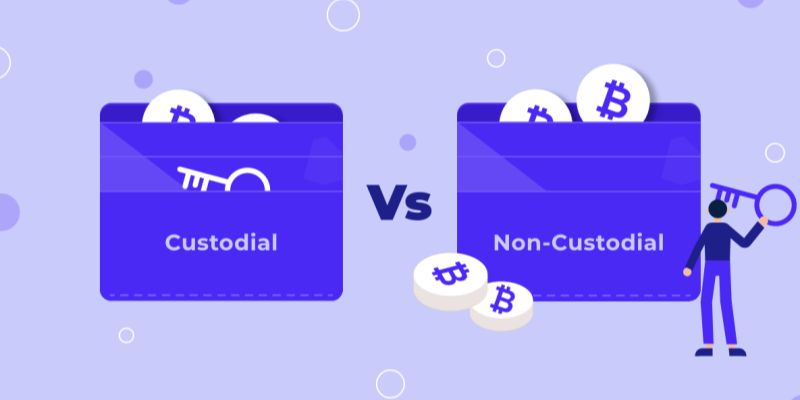
Setting Up Your Wallet: A Step-by-Step Guide
How to Set Up a Custodial Wallet With Enhanced Security
First, pick a trusted cryptocurrency exchange. The ones with high security are best. Then, make an account on their site. You will need to give them some personal info. They will likely ask for an ID and a picture to make sure it’s really you. This is part of what we call “KYC”, which means Know Your Customer. It helps stop fraud.
Next, set up two-factor authentication. This makes your account safer. You have something you know (your password) and something you have (like a code from your phone) as security steps. You can use authentication apps for this. They are safer than just text messages.
Once you’ve done that, deposit your crypto into the wallet. It’s important to remember that holding crypto in a custodial wallet means the provider has the keys. If they get hacked, you might lose your assets. It’s a risk you take for the ease of use.
Finally, check if the wallet has insurance or other protections. Some exchanges will cover losses from security breaches. That’s a big plus and can give you peace of mind.
Creating Your Own Non-Custodial Crypto Wallet for Full Control
Now let’s talk about non-custodial wallets. With these, you are the boss. You control the private keys and the crypto. No one else.
Start by choosing a wallet type. There are software wallets that you can download and hardware wallets you buy. Hardware wallets, like the Trezor or Ledger, are like safe boxes for your crypto. They store your assets offline. This makes them very secure, but they can cost some money.
For a software wallet, download an app or program. There are many free options. Just ensure you get it from a trusted source to avoid scams. After you install the wallet, create your new wallet in the app. Write down the seed phrase it gives you. This is usually 12 or 24 words long. It acts like a master key. With it, you can get to your crypto from anywhere. But if someone else gets it, they can too. So keep it safe! Never share it.
The next step is to move your crypto to this new wallet. You do this by sending it from wherever it is now to your wallet’s address. It’s a bit like sending an email. Only you send crypto instead of words.
Finally, stay up to date. Watch out for news on blockchain and any updates for your wallet. Updating your software wallet is vital. It keeps your security features fresh and guards against hacks.
By picking the right wallet and setting it up carefully, you can help keep your crypto safe. You must always remember the risks and stay informed. Your crypto’s safety depends a lot on you. Whether you go custodial for ease or non-custodial for control, know what you’re getting into. Make security your top priority.
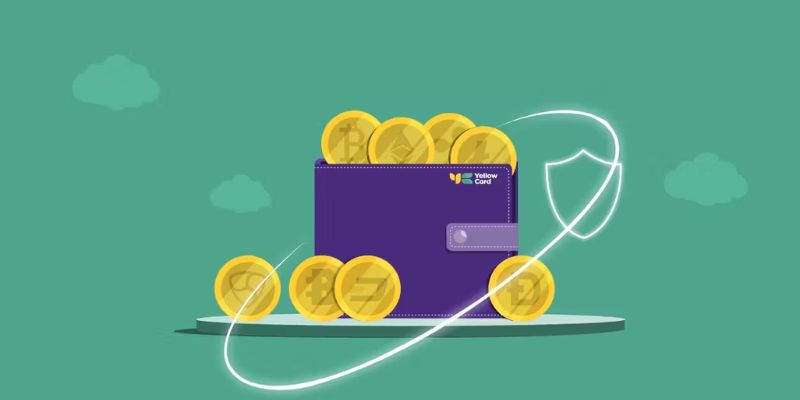
Weighing Security and Convenience in Crypto Storage
Custodial vs Non-Custodial Security: Navigating Risks and Safeguards
When you’re diving into the world of crypto, choosing the right wallet is key. Think of your wallet as your bank account, but with a twist. You’ve got two main types: custodial and non-custodial. A custodial wallet is like having a bank. They keep your money safe, but they hold the keys. Non-custodial? That’s all you. You hold the keys, and you’re in charge.
Custodial wallets are often found on cryptocurrency exchanges. These wallets are simple to use. You sign up, and boom, you’re ready to go. Your coins are safe, they say. But are they? One big worry is that the exchange could get hacked. Or it might not let you access your funds when you want. That’s the custodial account risk we talk about. It’s a trade-off: easy access vs. total control.
On the other hand, non-custodial wallet features give you full power. You set it up, you manage it, and you keep your private keys. It’s more work, but you call the shots. No one else can touch your crypto unless you let them. The catch? You must know what you’re doing. Lose your keys, and your crypto is gone. For good.
The Significance of Wallet Private Keys and Seed Phrases
Now, let’s break down private keys and seed phrases. Your private key is like the secret code to your crypto vault. If anyone else gets it, they can take your coins. That’s why we keep it under wraps. And the seed phrase? It’s a backup code. Write it down and keep it safe. It’s your get-out-of-jail-free card if you lose your key.
For a custodial wallet, you don’t see your private key – the service keeps it. That’s where two-factor authentication comes into play. It adds an extra layer of defense. But remember, you’re trusting someone else with your key.
In a non-custodial set-up, you’re the boss of your keys. Create a non-custodial crypto wallet, and you’re in charge of key management. This means responsibility. You must keep your keys and seed phrase safe from trouble. Use a hardware wallet (that’s a cold wallet) for top-notch safety. It’s offline, so hackers can’t touch it.
Both crypto storage options have their perks and their risks. A custodial wallet is easy to use but think about the risk there. With non-custodial, you’ve got freedom and privacy, but you’ve also got to know the ropes. And always remember the best practices for wallet security. Like not sharing your keys, and keeping backups of your seed phrase safe.
But what’s best for you? Well, that comes down to how you balance safety and ease. Want to know more about how to set up a custodial wallet or create a non-custodial crypto wallet? There are guides aplenty to help you start. Just always keep your head in the game and your crypto safe. After all, in the crypto world, you’re your own best defender.
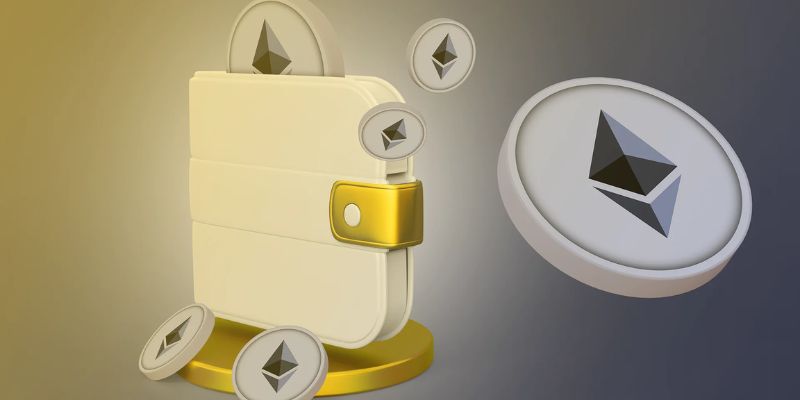
Advanced Considerations for Crypto Wallet Users
Incorporating Best Practices for Wallet Security
A smart move is securing your crypto assets. It’s like locking your gold in a vault, but the vault is digital. For custodial wallet users, start by picking a respectable, well-known service provider. They manage your keys, so trust is vital.
Use strong, unique passwords. Pair your account with two-factor authentication (2FA). This adds a layer of protection. Always keep your software updated. Hackers love outdated software. It’s an easy target.
Remember, even top-notch security might not stop every thief. But these steps make the job tough for them.
Recovery Processes and Trust Models: Planning for the Unexpected
Hope for the best, plan for the worst. If you own crypto, expect bumps along the way. Write down your wallet’s seed phrase. Keep it safe. It’s your crypto lifeline. Lose this, and your digital gold might be gone forever.
With non-custodial wallets, you’re in charge. You must keep your keys safe. No one else can save you if they get lost. A hardware wallet stores keys offline. That’s like keeping your cash in a safe.
Recovery might seem daunting. But with your seed phrase, you can breathe easy. Lose a device? Use the phrase to get your crypto back.
In crypto, trust determines who holds the keys. Custodial means they do. Non-custodial means you do. Know the risks of each to choose wisely.
In this post, we dove deep into the world of crypto wallets. We started off by looking at custodial wallets, which are like banks for your digital coins. These keep your money safe but you don’t hold the keys. Then, we explored non-custodial wallets. They let you be the boss of your crypto, giving you full control with your own keys.
We also walked you through how to set up both types of wallets. For a custodial wallet, we showed you how to make it extra secure. For your own non-custodial wallet, we explained how to take complete charge of your digital cash.
Then, we compared security and ease of use. We learned that managing risks means understanding how custodial and non-custodial wallets protect your money. Don’t forget, your private keys and seed phrases are super important for safety.
Finally, we talked about how to stay safe with your crypto. Using smart security tricks and planning for surprises can help a lot.
Remember, whether you pick a custodial or non-custodial wallet, it’s all about balancing safety and how easy it is to use. You’ve got this! Stay cautious, keep learning, and you’ll be a crypto pro in no time.
Q&A :
What are the main differences between custodial and non-custodial wallets?
Custodial wallets are managed by a third party, such as a cryptocurrency exchange, which holds the private keys on behalf of the user. This means the user relies on the security and honesty of the third-party service to manage their funds. Non-custodial wallets, on the other hand, give the user full control over their private keys, which means they have exclusive access to their cryptocurrency. The responsibility for ensuring the security of the wallet rests entirely with the user.
How do you set up a non-custodial cryptocurrency wallet?
Setting up a non-custodial cryptocurrency wallet involves a few key steps. First, you must choose your wallet software based on factors such as supported cryptocurrencies and security features. Once you’ve downloaded and installed a non-custodial wallet app or software, create a new wallet. Be sure to record the seed phrase provided during setup, as this phrase is the only way to recover your wallet if you lose access. After securing your seed phrase, your wallet will generate a public address, which you can use to receive funds.
What are the security advantages of using non-custodial wallets over custodial wallets?
Non-custodial wallets offer enhanced security because they allow users to have full control over their private keys, which are never shared with a third party. This minimizes the risk of theft or loss due to the compromise of a custodial service. Non-custodial wallets also typically require users to set up a secure passphrase or PIN, adding an extra layer of protection. Furthermore, users can take extra security measures such as using hardware wallets or multisignature setups.
Can you explain how to create a custodial cryptocurrency wallet?
Creating a custodial cryptocurrency wallet often involves signing up with a service that offers custodial wallet solutions, such as a crypto exchange or a specialized wallet provider. You’ll need to provide personal identification information and follow the platform’s set-up process, which usually includes creating an account, setting up two-factor authentication, and possibly going through a Know Your Customer (KYC) verification process. Once your account is set up, the service will manage your private keys, and you can start depositing and managing your cryptocurrency through their system.
How do custodial wallets handle loss or theft of cryptocurrency?
In the event of a loss or theft of cryptocurrency in a custodial wallet, the wallet provider is typically responsible for the security of the funds while they are stored on their platform. Many custodial services have insurance policies and robust security measures in place to protect user funds. If there is a security breach, the wallet provider might compensate users for the lost funds, depending on their terms of service and the nature of the incident. However, it is important for users to understand the provider’s policies and to use strong, unique passwords, along with two-factor authentication, to help reduce the risk of loss or theft.

